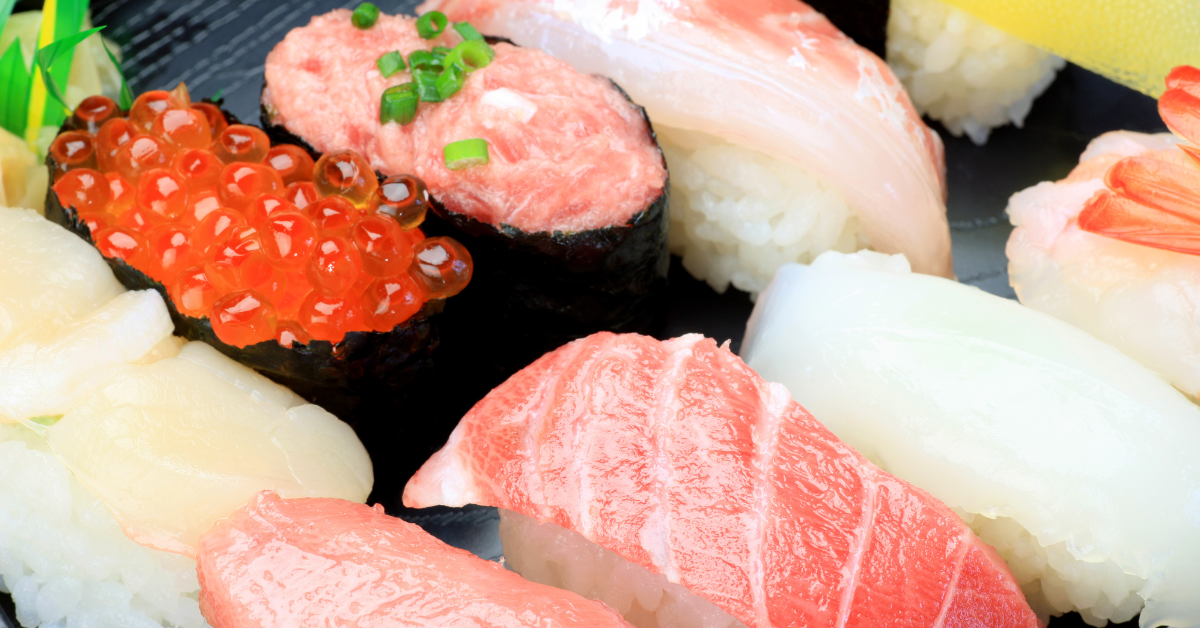Sushi is more than just food in Japan—it’s a cultural expression that reflects the country’s traditions and craftsmanship. This article highlights the top five prefectures where sushi is both an art and a daily delight, offering unique ingredients and techniques you won’t find anywhere else.
Exploring the Appeal of Japanese Sushi Culture
The Origins and Evolution of Sushi
Sushi is one of the most iconic elements of Japanese cuisine, with roots tracing back to ancient Southeast Asia, where fermented fish was used as a preservation method. In Japan, it evolved into “narezushi,” and later during the Edo period, “nigirizushi” was born. Particularly, Edomae sushi laid the foundation of modern sushi culture and continues to be passed down by skilled chefs.
Each region’s use of different seafood and preparation methods contributes to sushi’s diversity. Sushi is more than just food—it represents the spirit and craftsmanship of Japan, making it a deeply cultural experience for both locals and travelers.
Top 5 Prefectures Known for Outstanding Sushi
Hokkaido A Treasure Trove of Fresh Seafood
In Hokkaido, the quality of sea urchin and salmon roe is considered among the best in the world. Tourists flock to cities like Sapporo and Otaru to enjoy sushi made with freshly caught seafood, delivered straight from the ports.
| Area | Popular Sushi Toppings | Characteristics |
|---|---|---|
| Sapporo | Scallops, Salmon | Sushi made with seafood from local markets |
| Otaru | Sea Urchin, Snow Crab | Traditional sushi streets |
| Hakodate | Squid, Botan Shrimp | Morning sushi at local markets |
Ishikawa Artistic Sushi Culture from the Sea of Japan
In Ishikawa, particularly in Kanazawa, sushi features creative use of local fish, including the prized blackthroat seaperch (nodoguro). Traditional Kaga cuisine and sushi merge into a culinary experience that delights the palate and the eyes.
| Ingredient | Feature | Served As |
|---|---|---|
| Nodoguro | Rich, fatty fish | Seared nigiri |
| Gas Shrimp | Delicately sweet and fresh | Gunkan maki |
| Young Yellowtail | Seasonal winter fish | Aged sushi |
Tokyo The Birthplace of Edomae Sushi
Tokyo remains the heart of sushi culture, where traditional techniques from the Edo period are preserved and celebrated. High-end sushi restaurants in Ginza offer art-like nigiri crafted by expert chefs, while more casual sushi chains in Shibuya and Shinjuku also maintain impressive quality.
| Type of Restaurant | Area | Characteristics |
|---|---|---|
| Luxury Sushi | Ginza, Akasaka | Seasonal omakase courses |
| Conveyor Belt Sushi | Shibuya, Ueno | Tablet ordering, multilingual menus |
| Standing Sushi Bars | Tokyo Station, Akihabara | Quick and affordable experience |
Shizuoka Sushi with Rare Delicacies from Suruga Bay
Shizuoka boasts local toppings like sakura shrimp and raw whitebait, which are unique to the Suruga Bay region. The prefecture is also known for wasabi production, providing an added layer of flavor to every sushi bite.
| Specialty | Main Production Area | Sushi Use |
|---|---|---|
| Sakura Shrimp | Yui Port | Gunkan, chirashi sushi |
| Raw Whitebait | Coastal Suruga | Nigiri, eaten raw |
| Fresh Wasabi | Amagi, Izu | Grated and served fresh |
Fukuoka Sushi Culture Highlighted by Aging Techniques
In Fukuoka, sushi is enhanced by aging techniques that draw out deep umami from the fish. From mackerel to yellowtail, chefs let the fish rest for several days to intensify flavor, creating a distinctly rich sushi experience.
| Topping | Aging Time | Characteristics |
|---|---|---|
| Mackerel | 1–2 days | Slightly pickled, rich taste |
| Gizzard Shad | Half to 1 day | Salted and vinegared |
| Yellowtail | 2–4 days | Dense umami and smooth texture |
Tips to Maximize Your Sushi Journey
Visit During Peak Seasons for Each Fish
Sushi offerings vary greatly by season, so planning your trip according to the seasonal catch ensures the best experience. Spring features sea bream and firefly squid, summer brings horse mackerel and sea urchin, autumn has Pacific saury, and winter offers fatty yellowtail and monkfish.
Combine Sushi Tasting with Sightseeing
Pairing sushi meals with local attractions enhances your overall travel experience. In Hokkaido, visit Noboribetsu Onsen; in Ishikawa, explore Kenrokuen Garden; in Tokyo, enjoy Asakusa or Tsukiji; in Shizuoka, admire Mt. Fuji; and in Fukuoka, discover Dazaifu Tenmangu Shrine or Hakata’s vibrant street stalls.
| Prefecture | Sushi + Sightseeing |
|---|---|
| Hokkaido | Sushi + Noboribetsu Onsen |
| Ishikawa | Sushi + Higashi Chaya District |
| Tokyo | Sushi + Tsukiji Market, Asakusa |
| Shizuoka | Sushi + Mt. Fuji, Izu Onsen |
| Fukuoka | Sushi + Dazaifu Shrine, Food Stalls |
Conclusion
Each of these prefectures offers sushi with distinct local character and unmatched quality. Hokkaido showcases pure oceanic freshness, Ishikawa blends art and tradition in every bite, Tokyo allows visitors to explore both historic and modern styles, Shizuoka presents sushi enhanced by local ingredients like wasabi, and Fukuoka’s aging techniques yield deep, layered flavors.
Beyond just dining, sushi reflects the essence of each region’s culture, climate, and craftsmanship. Learning about the story behind each dish makes the experience even more enriching. On your next visit to Japan, consider planning a sushi tour. It promises to be a culinary journey that stimulates all five senses and deepens your appreciation of Japanese tradition.






